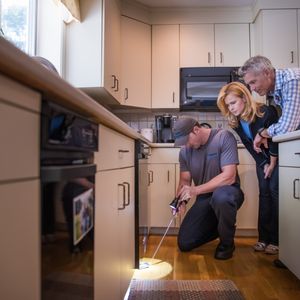Pest Control & Exterminator Services in Sudbury, MA
Find an Exterminator in Sudbury, MA
Serving Middlesex County since 1984
Established in 1639 as a plantation, Sudbury Massachusetts has grown from 130 original settlers to a town of over 18,000 today. Paul Revere rode through Sudbury on his midnight ride, and its renowned Wayside Inn claims to be the oldest operating inn in the country, making it a well-known New England attraction.
With both the ocean and the countryside not far off, Sudbury experiences its fair share of unwanted pests and wildlife invaders, necessitating pest control and wildlife removal services. Colonial Pest Control keeps experienced exterminators right in the town of Sudbury, making them experts at pest issues unique to this area.
Colonial Pest Control has developed one of the best pest treatment programs available today and specializes in getting rid of pests that invade the New England area. Colonial Pest Control uses low-toxicity extermination methods that are more humane to your unwanted critters and safer for your children and pets. And Colonial Pest Control offers pest prevention programs to ensure that your pest or wildlife problem never returns.
Sudbury residents experience infestation problems from a number of pests, most notably carpenter ants, termites, rodents, bees, bats, birds, and cockroaches. While the winter months are slower and the pests pick back up again in the spring with termite and bird infestations, pests are a nuisance in Sudbury year-round and require both removal and prevention.
Pest Control in Sudbury, MA (Podcast)
In this podcast, John Maher talks with Zack Ciras about pest control in Sudbury, MA. Zack explains how the environment and architecture in Sudbury affect pest populations in the area. Then, he talks about how Colonial Pest helped one Sudbury homeowner eliminate mice, termites, and ants from her home.
John Maher: Hi, I’m John Maher. I’m here today with Zach Ciras, Quality Manager with Colonial Pest Control. Today, our topic is pest control in Sudbury, Massachusetts. Welcome, Zach.
Zack Ciras: Thanks for having me, John. Thanks.
Introduction to Sudbury, MA
John: Sure. So Zach, are there any sort of general things about pest control in Sudbury that you’ve noticed in the years of working there?
Zack: Yeah. Sudbury is a great town. I love going to Sudbury and you never quite know exactly where you’re going to get. Sudbury is, of course, north of Framingham. Framingham’s a bit more of a city, a true city, where Sudbury is a lot more on the outskirts of the city. Sudbury used to be a part of Framingham, but hundreds of years ago, it split off and formed its own town. It has a great history dating back to the revolutionary war era. A lot of those towns, Wayland, Lexington, and Concord that are near Sudbury have a lot of rich history tied in with folks who lived in Sudbury, some of the old structures in Sudbury. So you have a lot of those old structures that are really historical items in Sudbury that are lived in by modern families, and they have the little plaque on the wall. It’s really cool to see the old historical homes.
But then you do have a lot of new homes as well. The population in Sudbury is great. They have a lot of working professionals with young families. There’s a lot of families in Sudbury, a lot of people with kids from three years old to 20 years old, and that whole range is a huge population so we see a lot of families that are growing in Sudbury. Seems like a really great town to live in. It certainly is a great town to work in, and a lot of the work that we do is with those families and the single family houses that are a little bit outside, further away, north of Route 20, further away from Framingham. A lot of those neighborhoods were large construction projects where you have a whole street, kind of similar style home.
The Benefits of Hiring a Pest Control Company That Is Experienced in Sudbury, MA or Your Particular Area
Zack: So once you start working in a certain neighborhood in Sudbury, oh, this style of house, I usually see issues with water damage by the front door. And there’s a… I found a crack by the garage in six of these houses last year so that might be something to look out for. When you’re working in a lot of these towns that have similar homing styles, you tend to pick up on the trends, the construction trends of the time. Oh, this neighborhood was booming in the ’80s so the ’80s style construction might have X, Y, and Z for issues related to pests that we can keep in mind, because we know, we’re familiar with the neighborhood, we’ve been there so often. We’ve worked in those structures and with those families so much that we know kind of what to expect when we pull into the driveway.
Termites are notorious in Framingham. Framingham has a lot of the slab construction homes, the Campanelli houses, they call them. The Campanelli houses were built after the war, World War II. A lot of the GIs came home, they got their half acre, they got a Campanelli house, they started a family. Lot of great neighborhoods in Framingham with people still living in that style of construction. That style of construction with the slab, especially when you have the utilities in the center of the home causing cracks in the floor, notorious for termites to get in there.
How Old Root Systems Encourage Termite Activity in Sudbury, MA
Zack: And it was a very wooded environment so a lot of trees needed to be cut down. The root systems might have still been there. The stumps might have still been there. I’ve heard stories of them just burying the trees underneath the slabs so of course the termites are going to do their job, start to eat away at the dead trees, the stumps, the roots, that’s what they’re supposed to do. They’re actually super-beneficial for plant growth. Before the advent of modern fertilizers fixing nitrogen was a major issue. You had people traveling the world, looking for islands and anolas in the ocean where bats and birds were living and excreting and using that to get nitrogen for fertilizer. Termites, fixing nitrogen out of the decaying organic vegetable matter, has always been a huge natural source of fertilizer so they’re doing a huge service for the plants to grow, but when they’re fixing fertilizer or destroying wood in or under your home, it’s a big issue.
John: You want them to be doing that out in the woods, not…
Zack: Do it 80 feet from my house and I love you. You get a little closer, I get squirrely, right? So as we go north out of Framingham, you still have that population, you still have that forest density and that old growth there that… It’s cut down, it’s buried, it’s ground up to build the new homes and you still have those termite populations that are in those neighborhoods but now instead of a dozen trees where the home used to be, there’s a house. So if there’s any kind of wood to ground contact, if there’s any kind of moisture damage or leaking or cracks in the foundation, that might be an incentive for those termites to leave their beneficial place in the world and come into the house and cause some structural damage. We do see a lot of that in Framingham with the termites getting into the house.
Case Study of Pest Control in Sudbury, MA
John: Okay. Can you think of some specific examples of some pest control services that you’ve done in Sudbury, Massachusetts?
Zack: Yeah. In Sudbury, I had a call one year from a great woman. She sounded eager, very eager, to solve her problem. She had a termite swarm. She didn’t know it was a termite swarm. It had occurred the previous two years as well and she saw that swarm again. She said, “Those little flying ants are back, they come every springtime, but then they go away for the summer.”
To me, the ants that fly around in the springtime that go away, that’s something curious to look into. So when the ground temperature is rising, 50, 55 degrees, when we’ve had a series of good warm days and very often the day after a rainfall. So we’re looking at anywhere from March, April, May. Those are the peak times for swarms to occur in an area like Sudbury, where there’s all that cellulose-rich nutrients with the old trees and the vegetable growth and all that. So the ants were flying around. They usually go away, they were really starting to bother her. “There’s more this year.” Well, how many more? “Oh, there were hundreds and hundreds.” Okay, if there’s hundreds and hundreds of flying somethings, that warrants a call.
Swarming Termites in Sudbury, MA
John: And was she finding them in the house or was she finding them outside the house or what?
Zack: Yeah, she noticed them primarily inside the house. It was the front stoop area where the moisture damage often picks up in a lot of those homes in Sudbury and she had a crack right by the front door. They were flying right out of that crack. The basement was largely finished, but luckily that was where the water closet was so we had access to the sills there.
A homeowner living their life isn’t going to go around searching the basement sills on a normal basis. That’s what we’re for. So when we got out there, we did see there were swarms. There were the wings when termite swarms swarm out, they will often drop their wings so if you don’t see the swarm occurring on its own, the termites will drop their wings and individuals would crawl off. You might just find a pile of wings. And the wings on a termite, they’re almost twice the length of a body. There’s two pairs, a front pair and a fore pair and a hind pair that are equal size and they’re kind of a opaque, not quite see through, you can’t quite see the veining on them like you will with a Carpenter Ant wing, kind of glassy, a cloudy glass, if you will.
So you see a lot of those wings and she had those in her foyer, right by the front stoop. They probably swarmed outside as well. They were right at the border between the inside of the house and the exterior stoop. The ones outside, they want to swarm off, find a mate, find a nice, wet stump or pile of mulch or someplace to start a new colony. Most of those individuals will die off but if you have a dozen successful out of several hundred, you’re going to have thousands within a few years.
So she did have the termite swarms, and we were able to identify that. There was some minor damage from what we could see occurring in the basement underneath the front steps. The mud shelter tubes are something that you look for for termites. The swarmers will have their own shelter tubes, but where the workers are working from the soil where the main colony is into the work site. In this case, it was her wood, her pine wood sills, in the basement. They’ll travel through mud tubes or shelter tubes. And those shelter tubes do a couple different things. One thing that they do is protect against things like Carpenter Ants or other kinds of ants that will try to eat the termites.
Termites are very delicious. Around the world, larger types of termites are a huge protein source for people, animals, birds, across the board. The termites we have in New England are a little small, but ants still love to eat them. Salamanders love to eat those as well so you’ll see salamanders hanging out where the termites are. So it protects them against predators, but it also keeps that environment really moist, really humid inside of their working tunnels as they’re doing their damage to the house.
So, yes, she had some termites there. She also had some Carpenter Ants. Moisture was the key factor there. The Carpenter Ants were in a similar area right near the front door and they were building into another void and near the termites but they were separated enough with enough resources that they weren’t disturbing each other too, too much.
Going down and back around to the side of the house, she had a double door garage going into the house. The weather stripping was worn off underneath the garage doors. And you could see a little crescent chewed out from the weather stripping. The mice were getting into the garage and from the garage, they break through the outer envelope of the house. They were getting into the house. So she had some rodent activity in the attic, in the basement as well. Luckily for her, they hadn’t gotten into the living space, hadn’t found the kitchen just yet, but there was a burgeoning mouse population. So she had Carpenter Ants, she had mice, she had termites, she had the whole gambit.
How Colonial Pest Got Rid of Carpenter Ants, Termites, and Mice From a Home in Sudbury. MA
John: Wow. And so what’s the next step in that? What do you do to get rid of not just the termites, but all of these issues that she had with the Carpenter Ants, et cetera.
Zack: Yeah. So the most effective thing for her based on my visit was going to be a long-term approach. So we want to eliminate the current problems now. We want to micro-inject and flush out the Carpenter Ant nest,and apply an exterior chemical barrier. We want to close the entry points for the mice, search for any other potential entry points and really seal off the house as best we can to exclude new mice from coming in. We use bait to eliminate the existing population and keep that under control before they start to overpopulate and get into living areas or chew on wires and cause damage to the installation, other things that mice do as well as spreading disease and germs and salmonella, things like that. So that was the immediate action for those.
For the termites, there was kind of a dual approach. The best treatment long-term for termites that we use is the Sentricon bait system. Sentricon is high density, cellulose-based bait with an active ingredient in there, which is not a typical neurotoxin stomach poison kind of insecticide poison. It’s more of a growth regulator for insects. Its active ingredient prevents the development of a chemical called chitin. Chitin on an insect makes up their exoskeleton, their mandibles, their stomach lining, all the hard parts of an insect that are about your fingernail texture are made up of primarily chitin. We have chitin in our system. We have chitin in our fingernails, in our hairs, mixed with keratin protein. It makes up those hard, dense areas of our body as well, but related to a termite or an ant preventing their chitin redevelopment is a lot more lethal than preventing our development.
And with the way that the bait stations are designed, they go sub grade about a foot. They go down into the soil about one foot. They have vents around the outside of the plastic bait station with that bait, the cellulose-based bait inside of there. So the termites, once they find it, they can start feeding on it. They send the thermo signals back. They eliminate the entire colony by eliminating the workers and the workers can’t redevelop their chitin, their exoskeleton, they can’t maintain the protozoa and the microbiome of their own gut health to actually break down the cellulose to feed the other workers, the queens, the reproductives, the swarmers. Everybody relies on the workers so if we can eliminate the workers in this eusocial caste system that is a termite colony, then we can eliminate the entire colony without affecting any other non-target life. It’s very safe, very effective, great way to attack them long-term, as well as eliminating what’s there currently.
In this woman’s particular situation, because there was the activity on the sills, and there was the swarming that was occurring inside the house, we wanted to attack that as well as putting the bait stations around the exterior perimeter of the home and the soil. So we had a couple different options. We could use a borate on the wood treatment that would… It’s more of a wood protector so the wood is being penetrated by basically minerals. Borate treatment, think of boric acid so our borates are a little bit different in their pH level, but essentially the same. It’s sodium and boron and hydrogen. As basic of a chemical as you can get. Boron is just a mineral that’s mined out of the earth, and of course sodium like table salt and hydrogen, and water.
So using something like a boric treatment or borate treatment on the wood preserves the wood, the sodium will find the moist parts of the wood, bringing the boron deeper in there. The boron acts as a metabolism stopper, essentially for insects or fungus that try to eat it. Great approach, I use this product all the time, especially for powderpost beetles who were trying to chew their way out of the wood and do the damage. You see a lot more powderpost beetles in the neighboring towns, Lexington Concord, Wayland, at the old, old homes with the crawl space, dirt basements, and the old big beams, I see a lot more of those little pinhole where the powderpost beetle are coming out of.
So that was one option to do a boric treatment on the wood. It was a very limited area. We didn’t have access to all the sills so making up even a gallon to treat that seemed a bit excessive. The other option that we could use would be to use a more traditional liquid insecticide, trying to get the cracks and crevices and down to where they’re swarming up from. So that’s the approach that we used there. We used a product that also attacks the pest’s metabolism. It’s not a high-risk product to use for other non targets in the house or around the house, really dribbling it down for lack of a more technical word, dribbling it down into the crack where they’re coming up from, and it being it liquid, it will find its own level. It will get to where the termites are coming up from. And that’s what we did there. We were able to get enough of that down there to stop the termite activity, and maybe even do a bit of damage to the colony underneath there.
That was the approach we took. A very simple procedure, very localized, really just trying to target. The process is similar with carpenter ants. We’re going to try to target where the activity is, and then have the exterior perimeter barrier. We don’t need to go in and spray every baseboard of the house. We don’t need to have the house vacant for a day because we’re using such toxic chemicals. We’re going to target exactly where the problem is with the right stuff and the right technique to stop them, and then prevent new ones from coming in with the exterior service.
So long-term, she got on our preventative maintenance program. She gets serviced twice a year, exterior spray services. We can maintain the mice population. We can eliminate the entry of new mice from coming inside the house and we check out the perimeter of the house, looking for openings, closing things up, marking conducive conditions and things that, “Oh, you’re starting to have some paint chip on the left side of the house. You might want to get that repainted before it’s a water issue.” Just kind of helping her be more aware of what the house is doing while she’s living her life within it.
So she has the Sentricon program. We service that twice a year. We do the extra spray service twice a year, and she’s covered now for everything from carpenter ants to bees and wasps, and mice and rats to termites. So she’s got great long-term protection with a broad spectrum of insects and pests within the house. And that’s a pretty common approach that we’ll do for homes in Sudbury. A lot of those Sudbury homes need long-term prevention. There’s a lot of life. They’re in an area that’s just rich and lush with insect life and rodent life, and life is beautiful, but we need to remind that life where the barrier is. A bee or a wasp is great on the flowers, but it becomes a pest when it starts to build inside the house so we remind them where those lines are.
Contact Colonial Pest for Pest Control Services in Sudbury, MA
John: Absolutely. All right, well, that’s really great information about pest control in Sudbury, Zach. Thanks again for speaking with me today.
Zack: Thank you very much, John.
John: And for more information, you can visit Colonial Pest Control’s website at colonialpest.com or call 1-800-525-8084 That’s 1-800-525-8084.
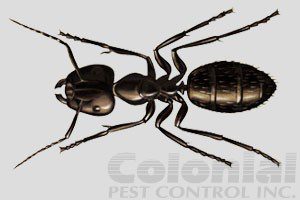
Carpenter Ants – Carpenter ants are named for their wood working capabilities, including destroying the aesthetic and structural aspects of wood-based New England homes even faster than the worst termite infestation. You may notice large black ants foraging near or in your home, sometimes with wings. The winged ants are looking for a new place to establish a nest, so it’s particularly important to stop winged carpenter ants before they take up permanent residence on your property.
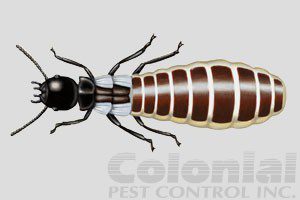
Termites – Termites eat through wood quickly once they’ve moved in and are a problem that must be professionally controlled in order to save the structural integrity of your home. Like carpenter ants, termites grow wings in the springtime and set off to establish a new nest and colony, so flying termites are a sign that they’re setting up shop around your home and it’s time to take action fast.
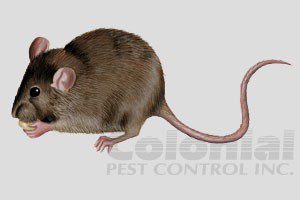
Rodents – Rodent infestations are one of New England’s biggest pest control problems, and include moles, voles, and chipmunks in addition to mice and rats. A female rodent can give birth to hundreds of babies over the course of a year. Each one of the female babies is able to reproduce when she’s only a month old, so you can imagine how fast the rodent population gets out of control when just a few of them move into your living space. Don’t wait to call an exterminator at the first signs of a rodent infestation, which include rodent droppings and nocturnal noises coming from the walls of your home.
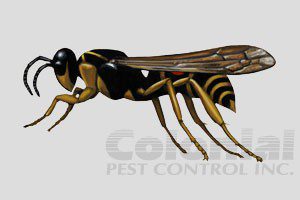
Bees – Bees are one of several pests that are beneficial and, in fact, necessary for nature’s survival, as they are responsible for pollinating and helping to reproduce hundreds of thousands of species of plants. Bees, wasps, yellowjackets, and hornets become a nuisance to humans when they build their nests and hives too close for comfort, often on the home’s exterior or nearby trees. Since many types of bees will attack and sting when they feel provoked or to protect their hive, it’s best to have a professional remove and relocate their homes when they’ve built them on yours.
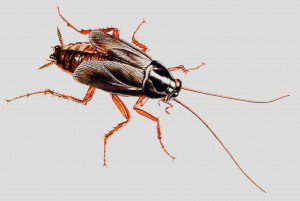
Cockroaches – Cockroaches hide by day, eat by night, and reproduce at a rapid rate, making them successful invaders that can be very difficult to exterminate. Cockroaches prefer moist conditions, and the warmer the better—so Sudbury’s summer climate is prefect for the roach’s propagation. Fortunately, cockroaches no longer need to be sprayed for, and your exterminators at Colonial Pest Control use both roach bait that the roaches eat and take back to the nest, and an insect growth regulator to stop their reproduction. Call us at 1-800-525-8084 right now for a FREE quote!
